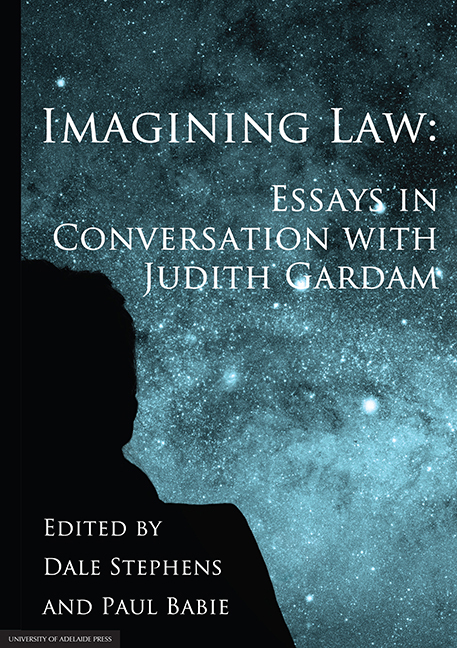Book contents
- Frontmatter
- Dedication
- Contents
- List of Contributors
- Acknowledgements
- 1 Introduction: Seeing Further over the Horizon – A World of Limitless Possibilities
- Part I
- Part II
- Part III
- Gender and Armed Conflict
- 5 Prosecuting Conflict-Related Sexual Violence Crimes: How Far Have We Progressed and Where Do We Go from Here?
- 6 The Construction of Knowledge about Women, War and Access to Justice
- 7 Laws, UFOs and UAVs: Feminist Encounters with the Law of Armed Conflict
- 8 An Alien's Review of Women and Armed Conflict
- 9 The Law of Armed Conflict and the Operational Relevance of Gender: The Australian Defence Force's Implementation of the Australian National Action Plan
- Gender and Feminist Concepts
- Theoretical Issues
- A Selected Bibliography
- Table of Cases and Materials
- Selected Index
9 - The Law of Armed Conflict and the Operational Relevance of Gender: The Australian Defence Force's Implementation of the Australian National Action Plan
from Gender and Armed Conflict
Published online by Cambridge University Press: 05 August 2017
- Frontmatter
- Dedication
- Contents
- List of Contributors
- Acknowledgements
- 1 Introduction: Seeing Further over the Horizon – A World of Limitless Possibilities
- Part I
- Part II
- Part III
- Gender and Armed Conflict
- 5 Prosecuting Conflict-Related Sexual Violence Crimes: How Far Have We Progressed and Where Do We Go from Here?
- 6 The Construction of Knowledge about Women, War and Access to Justice
- 7 Laws, UFOs and UAVs: Feminist Encounters with the Law of Armed Conflict
- 8 An Alien's Review of Women and Armed Conflict
- 9 The Law of Armed Conflict and the Operational Relevance of Gender: The Australian Defence Force's Implementation of the Australian National Action Plan
- Gender and Feminist Concepts
- Theoretical Issues
- A Selected Bibliography
- Table of Cases and Materials
- Selected Index
Summary
INTRODUCTION
It was not until a tour of duty in Afghanistan as a legal advisor with the International Security Assistance Force (ISAF) that I began to sense a disconnect between the different areas of operational law regarding the significance of women in armed conflict, both as combatants and civilians. On any given day, my rule of law officer, a female lieutenant colonel, and I might be meeting with members of women's rights international and non-governmental organisations. Under the effects-based approach to operations method of operational analysis being used at that time in the headquarters, the legal office had been assigned responsibility for developing an effective and holistic assessment of the progress of the international community's rule of law development efforts, and my rule of law officer had convinced me that metrics regarding the treatment of women in the Afghan judicial and corrections systems could provide a particularly valuable and relevant measure of progress.
On another day, I might find myself engaged in a dynamic targeting situation if the legal advisor who ordinarily provided real-time law of armed conflict (LOAC) advice was otherwise occupied. Not surprisingly, the targets in that theatre were generally individual men, but the civilians who were to be protected during the engagements seemed an amorphous group — civilians are civilians, and the direct effects of a kinetic weapon upon a person are not easily differentiated on the basis of sex or gender. Frankly, although I was aware of UN Security Council Resolution 1325 on Women, Peace and Security, women's and gender issues had in the past appeared to me to be largely human rights issues even in a combat theatre, and human rights issues seemed to have little to do with core LOAC tasks, such as a commander appropriately assessing proportionality before deciding to engage with armed force. This was a ‘war amongst the people’, however, and I began to sense that we were neglecting half of them.
To sense a disconnect is one thing; to be able to articulate it for one's self in terms of one's experiences and training is often quite another.
- Type
- Chapter
- Information
- Imagining LawEssays in Conversation with Judith Gardam, pp. 195 - 216Publisher: The University of Adelaide PressPrint publication year: 2016

